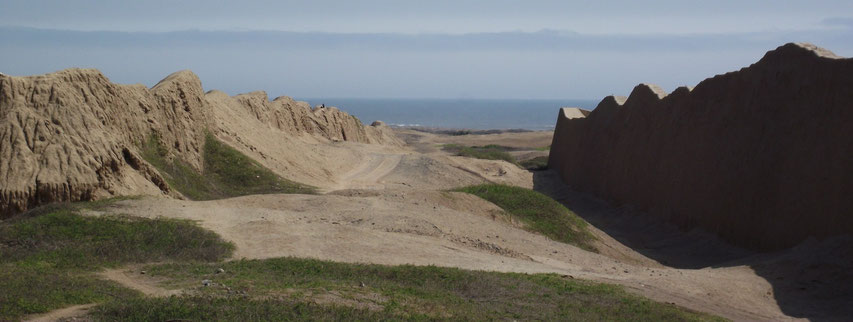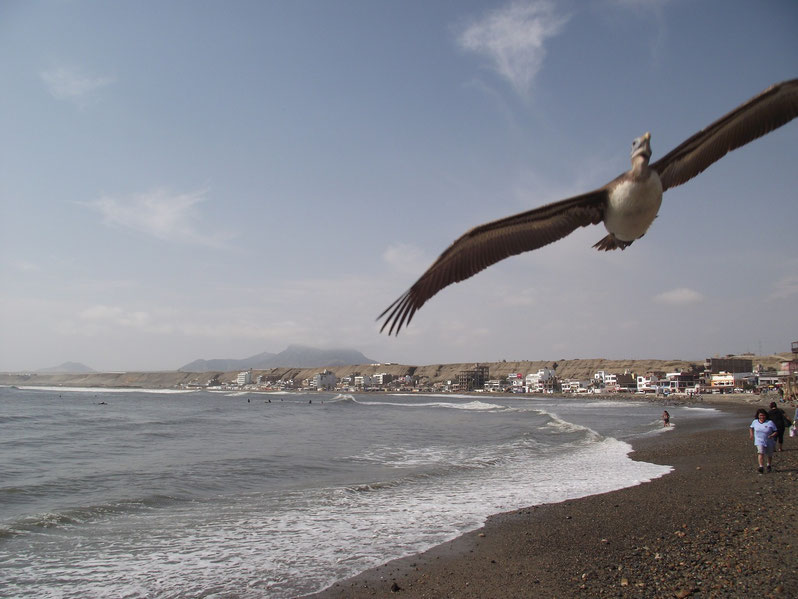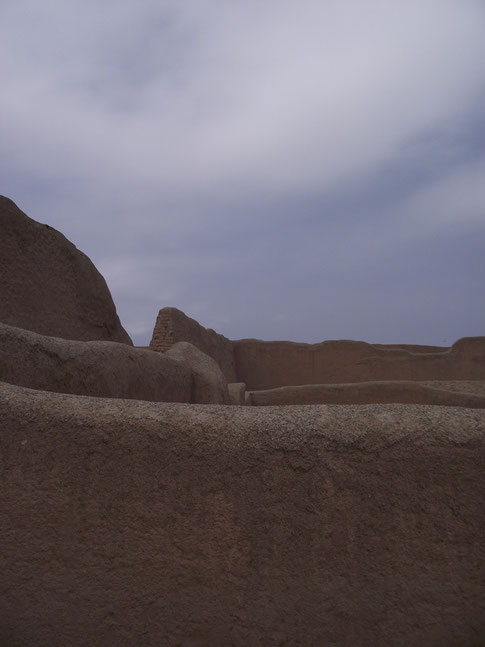

As you might have read in my previous post about our friends'
express kidnapping and robbery, we've got a rather mixed impression of Huanchaco. A small touristy destination, twenty minutes away from the third largest city in Peru is bound to have some
problems, but if you follow the advice in my previous post, there is no reason to avoid the town altogether.
First and foremost, Huanchaco has become a tourist destination for its surfing- board and the very necessary wetsuit hire costs S25 for a day. If you are clever enough it's possible to haggle down the price or argue that a day is 24 hours, so you can have a go the next morning too. We tried to surf with limited success, but I think it's the wrong season for the best waves.
Otherwise, the village is known for its unusual reed fishing boats which can be seen more often on show for tourists than actually in the water. The beach is a little grubby, but it doesn't seem to worry the enormous flock of pelicans which congregate by the pier.



Despite the previously mentioned incident, I never felt unsafe walking around in the daytime and was happy to discover an interesting selection of street-art in the alleys behind the beachfront.





Ignoring all of this, our main reason for visiting Huanchaco was to see the ruins of Chan Chan. This 700-year-old monster of an archaeological site is the largest pre-Colombian city in the Americas and the biggest adobe settlement in the world, so I was interested to see what was left of it.



Adobe is a sustainable building technique which uses a mixture of soil, water, straw and sand. The quantities vary depending on the type of soil, so I can only assume they didn't have to add much sand here in the desert, though there was occasional evidence of straw. Probably of more interest than eroding sand-walls for most people are the little details you can find around the citadels. The decoration below is thought to represent fishing-nets and you can see the semi-restored fish and birds above.

The real importance of Chan Chan for Dan and I is in showing how long structures of this type can last. Although the walls have worn away to some extent, considering the strong Pacific winds, flooding and lack of maintenance over the centuries, it's amazing there's anything left at all.





For the cheapest food in town, head to Huanchaco's compact but extensively stocked market. It's obviously nothing on Chiclayo but, you can find everything for your day-to-day needs here.
To find it head up Pilcomayo from the beachfront until you find the doors pictured to the left. Chicken, fish, vegetables and fish are the best bargains, but there are dry and refrigerated
goods too.
To get to Trujillo, the cheapest (and safest) way is to catch one of the many small coloured "H" buses for S1.50. You can also catch this bus from either direction to reach Chan Chan. Just ask the driver to stop and walk down the long road to the entrance.

We stayed in the spacious campsite at Hostal Nylamp, just off the beach front. It had a friendly, relaxed atmosphere, well-equipped kitchen and even a security guard at night. If you climb up the somewhat precarious bamboo ladder above the washing lines, there's a great view at sunset.

For less touristy destinations in Peru, you might like to read:
Cabo Blanco, a safe haven in Peru or The friendly city of Chiclayo.